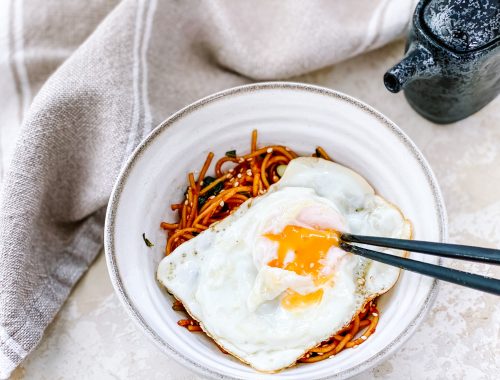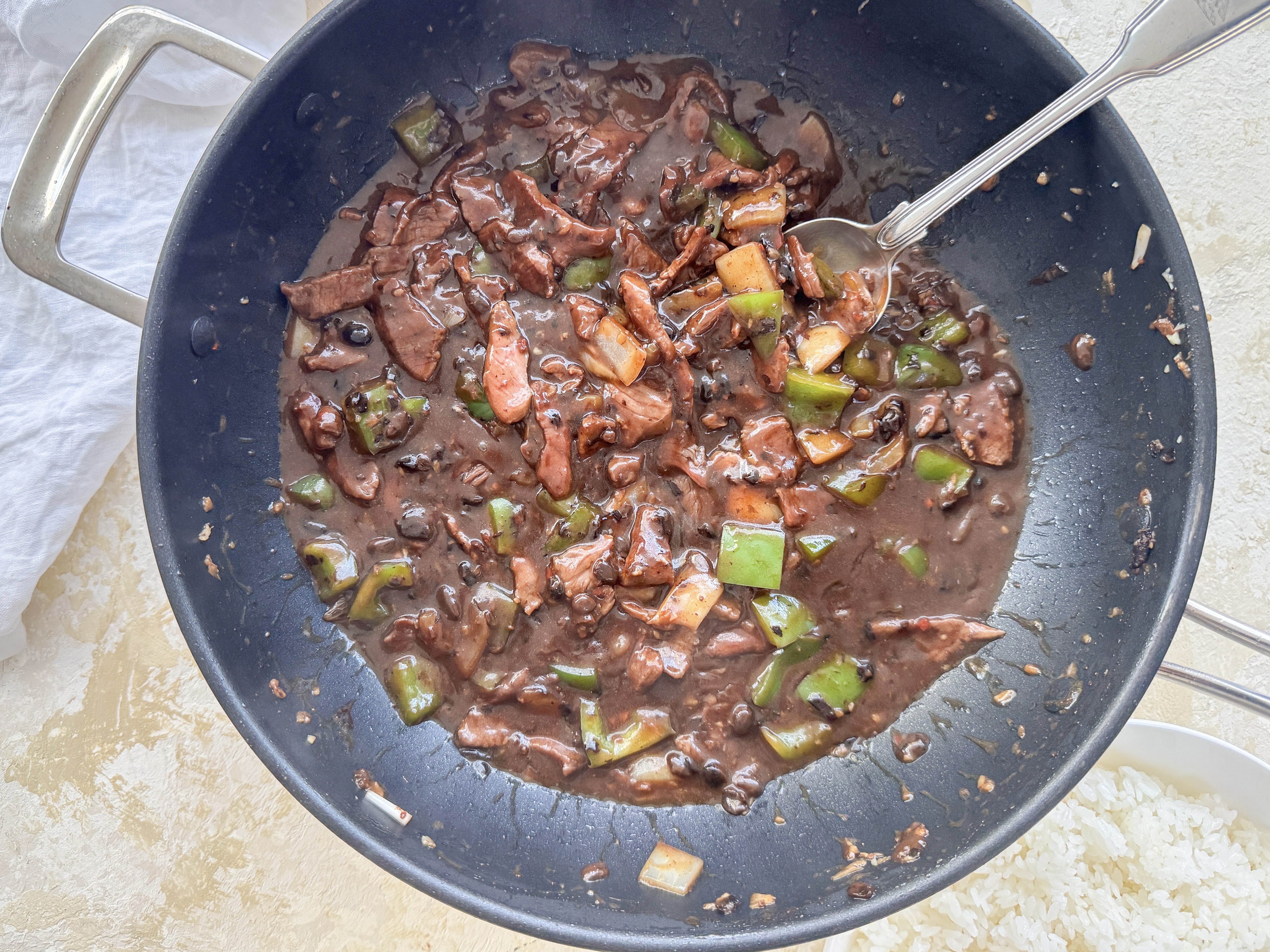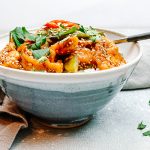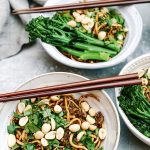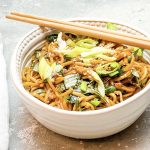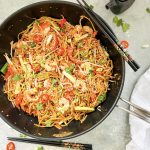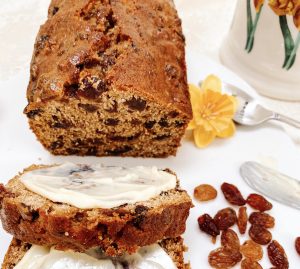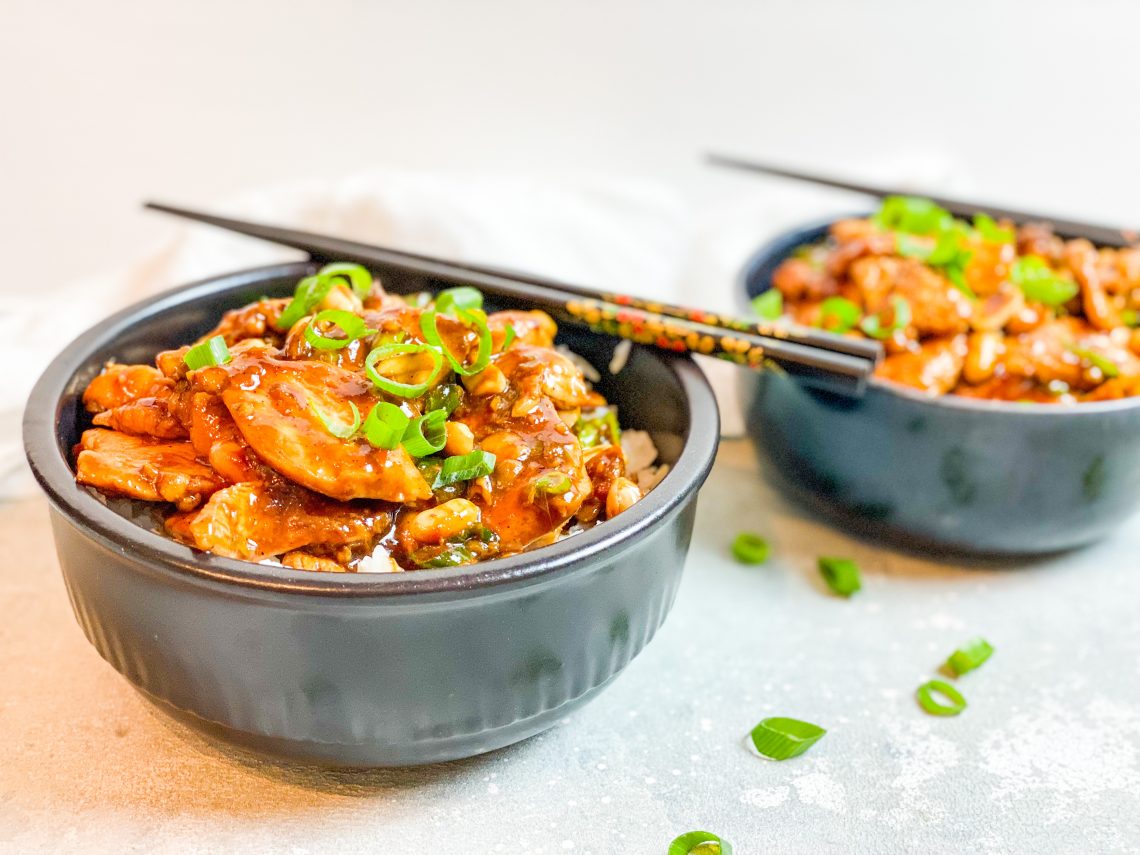
Kung Pao Chicken
Kung Pao Chicken is a sweet and salty stir fry with a spicy Sichuan peppercorn and chilli kick. Melt in the mouth slices of chicken are cooked with chilli, garlic, ginger and peanuts, bound in a velvety, soy and Shaoxing wine Chinese sauce in an explosion of texture and flavour. The Sichuan peppercorns bring a citrus hit followed by a dovetail effect across your tastebuds, as the heat develops and slightly tingles in a very addictive manner. The level of spice is up to you – make it as spicy as you like.
There used to be a Chinese restaurant in Wimbledon called the Bayee Village. We rarely buy take-aways, but when we fancied a Chinese meal, this is where we went and we always, without fail, ordered a Kung Pao Chicken. Sadly, the restaurant closed around 3 years ago when the owner retired. It has been a huge loss to the High Street and whenever I eat in a Chinese restaurant, I always order the Kung Pao Chicken, but it is never as good as the Bayee Village!
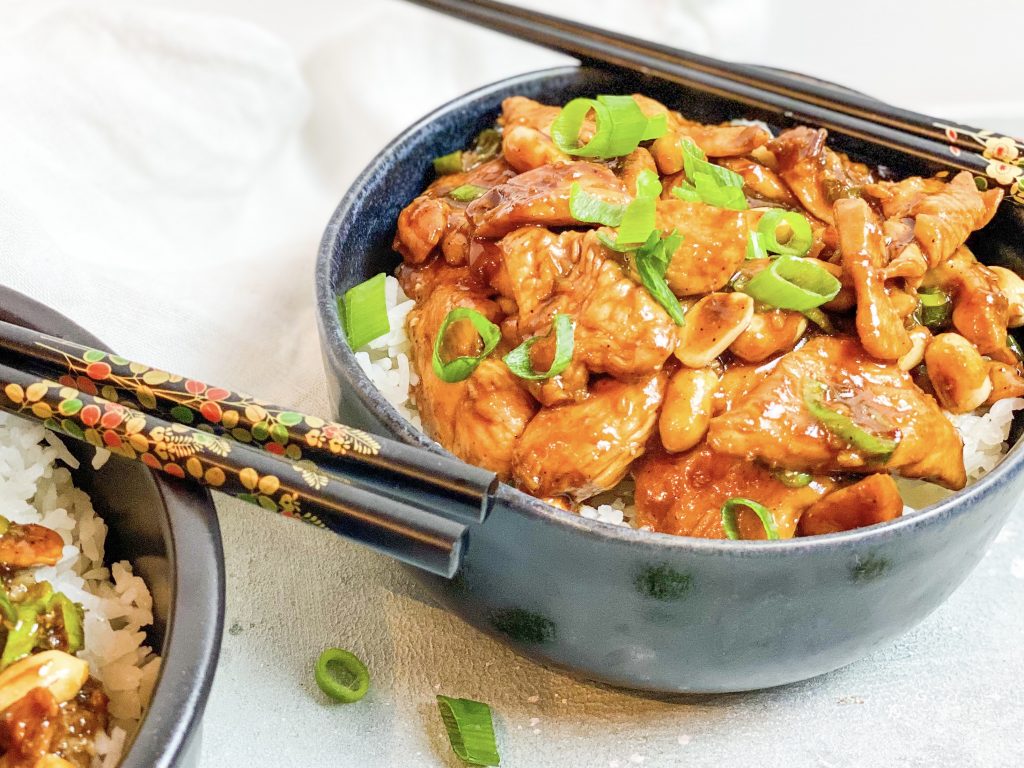
I am very happy to say, however, that this is a wonderful Kung Pao recipe. It is different from Bayee Village but the Sichuan heat, the smooth, silky sweet sauce with salty dark and light soy, is addictive. The crunchy peanuts add contrasting texture and it is delicious served over fluffy white rice to soak up this delicious sauce. It is not difficult to make and comes together quite quickly.
Where is this recipe from?
This recipe is slightly adapted from Nagi at Recipe Tin Eats. You can find her recipe here.
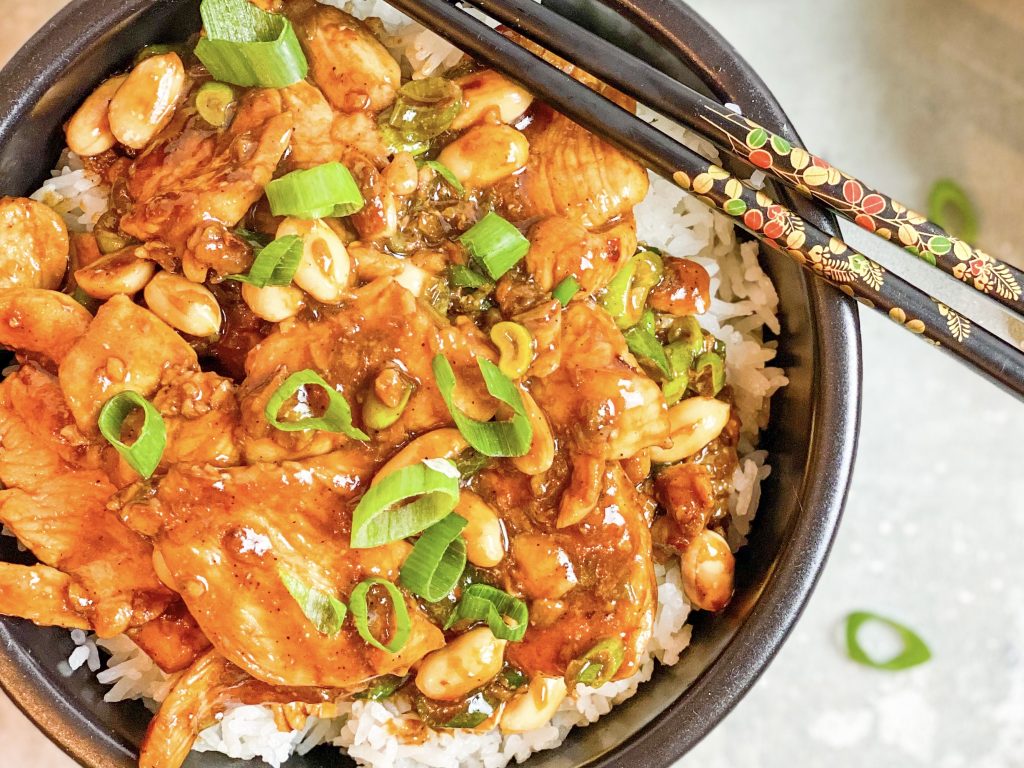
How to make Kung Pao Chicken
Collect all your ingredients together:
Kung Pao sauce –
- 2 teaspoons cornflour
- 2½ tablespoons light soy sauce
- 1½ tablespoons dark soy sauce
- 1½ tablespoons Shaoxing Cooking wine (or you can use sherry)
- 1½ tablespoons Chinese black vinegar (or use white wine vinegar or balsamic vinegar)
- 1 teaspoon toasted sesame oil
- 40g/3 tablespoons caster sugar
- 90ml water
Remaining ingredients:
- 1 – 1½ tablespoons Sichuan peppercorns or 1 – 1½ teaspoons Sichuan powder
- 80g roast, unsalted peanuts (or use roast cashew nuts)
- 500g skinless and boneless chicken, breast or thigh meat
- 4 medium spring onions
- 16g/4 cloves of garlic, peeled
- 16g peeled fresh ginger, roughly chopped
- ¼ – ½ teaspoon chilli flakes
- 2 tablespoons vegetable oil
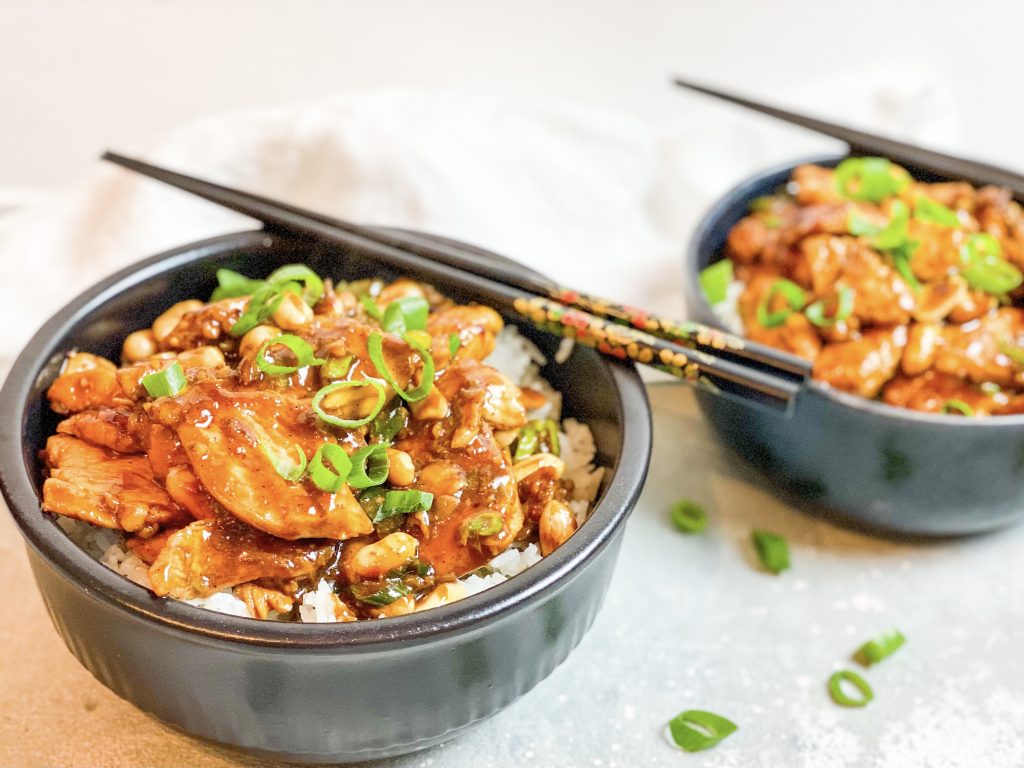
How to make this delicious stir fry:
First make the sauce –
- Mix the cornflour with the light soy sauce until the cornflour has dissolved and the sauce is smooth.
- Add the remaining ingredients, apart from the water.
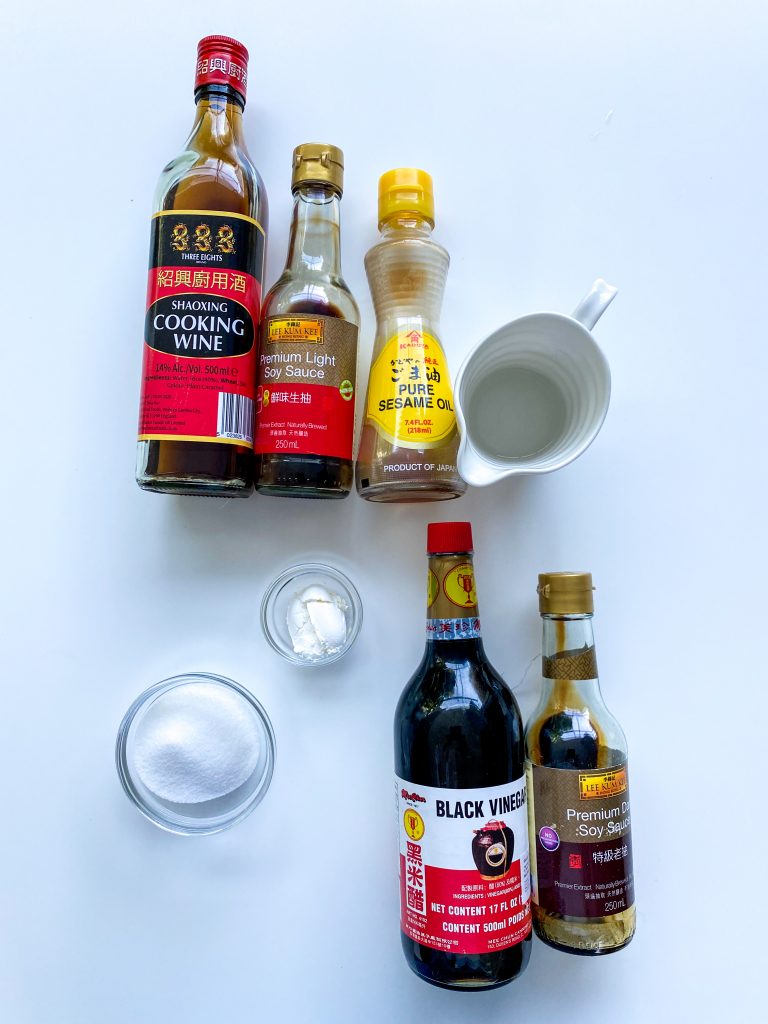
Kung Pao Sauce Ingredients 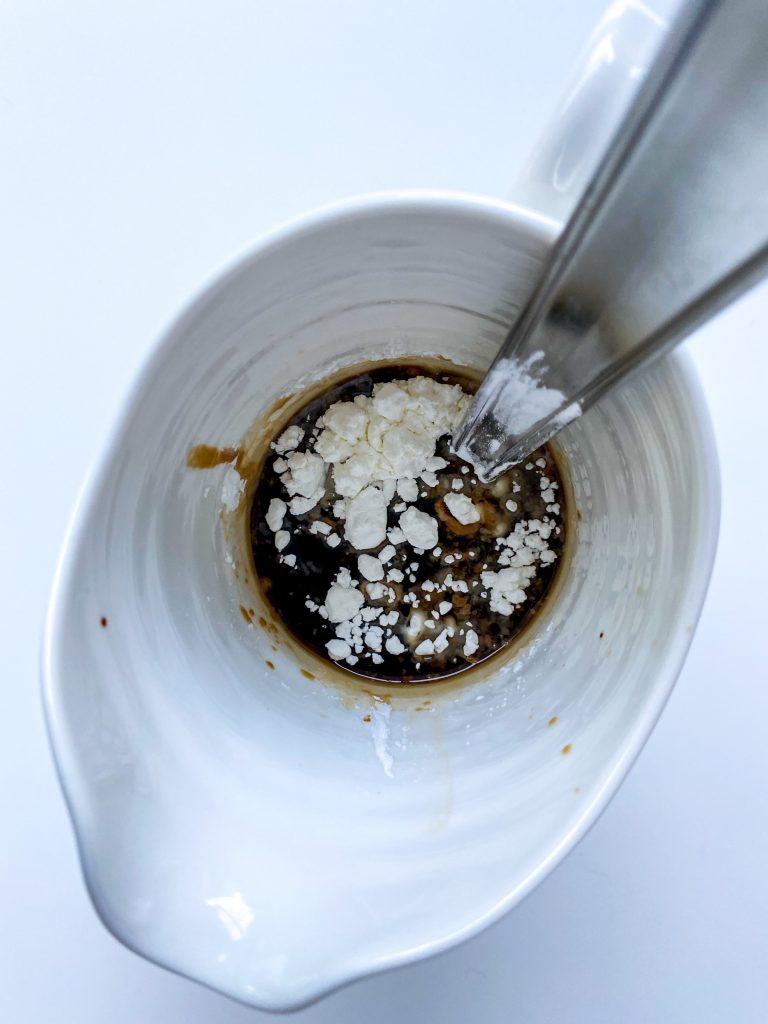
1 Mix cornflour and light soy 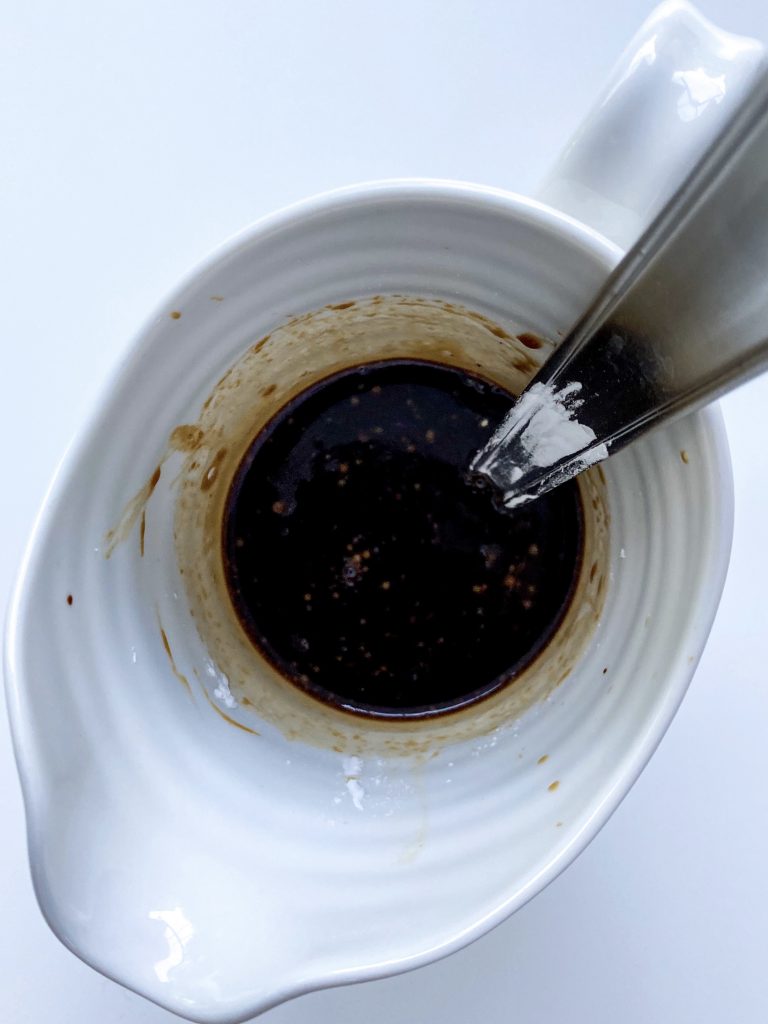
2 Add remaining ingredients apart from water
Prepare the chicken and vegetables –
- Thinly slice the chicken and put in a bowl.
- Add 2 tablespoons of Kung Pao sauce to the chicken and mix thoroughly. Set aside to marinate whilst you prepare the rest of the ingredients.
- Now add the water to the remaining sauce and set aside.
- Peel and roughly chop the garlic and ginger. Trim the spring onions and separate the the white bulbs from the green tops. Roughly chop the white bulbs and set the green leaves aside.
- Put the garlic, ginger, chopped white onion and the chilli flakes in a small food processor and blitz until they are finely chopped.
- Heat the wok over a moderately hot temperature and cook the Sichuan peppercorns for a couple of minutes, until aromatic. Shake the pan or stir a couple of times to ensure even heating.
- Tip into a mini spice blender and blitz until they are in a fine powder.
- Now add the peanuts (or cashews) to the pan and cook for 3-4 minutes until lightly browned. This helps release the natural oils in the nuts which brings out their flavour and improves the texture of the nuts to ensure a fabulous contrast to the chicken.
- Finally slice the green parts of the onions.
NB If your peanuts have skins, tip into a tea towel, wrap the tea towel around the nuts and rub enthusiastically so the skins come off. Set aside in a bowl.
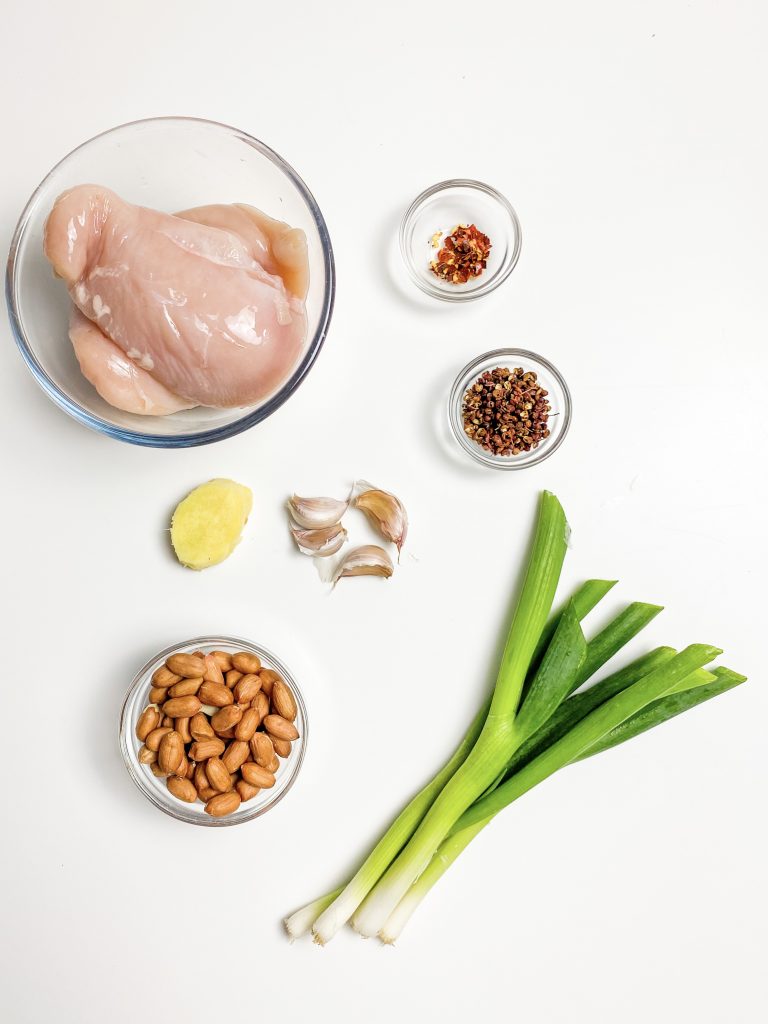
Remaining ingredients: 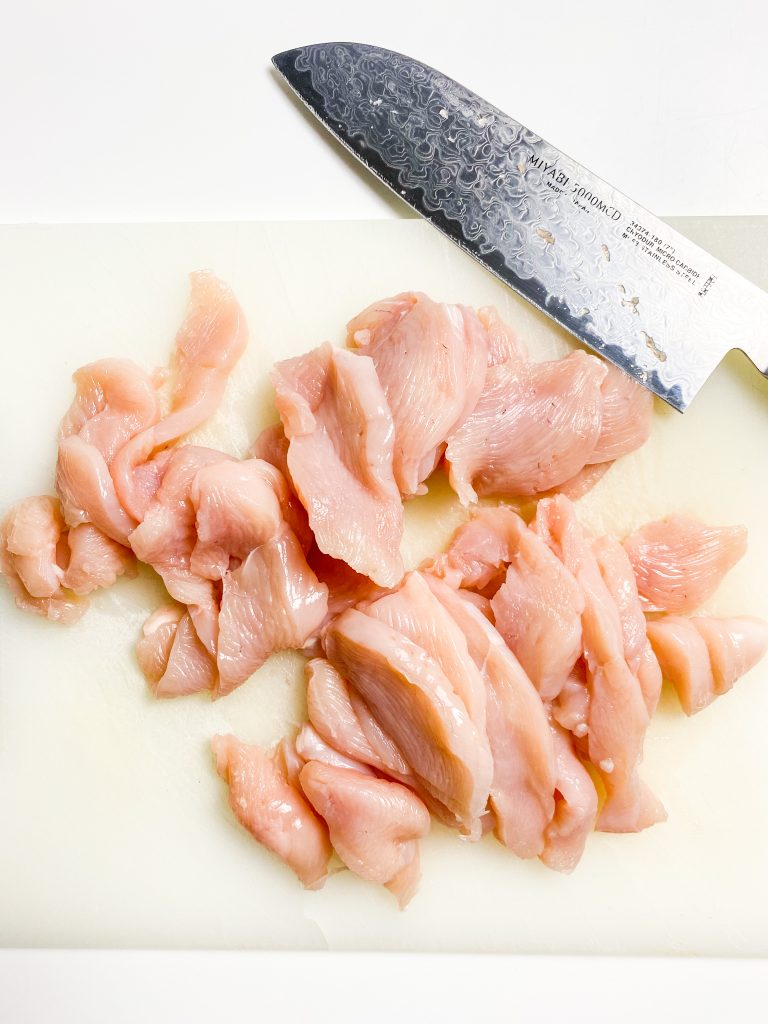
1 Thinly slice chicken 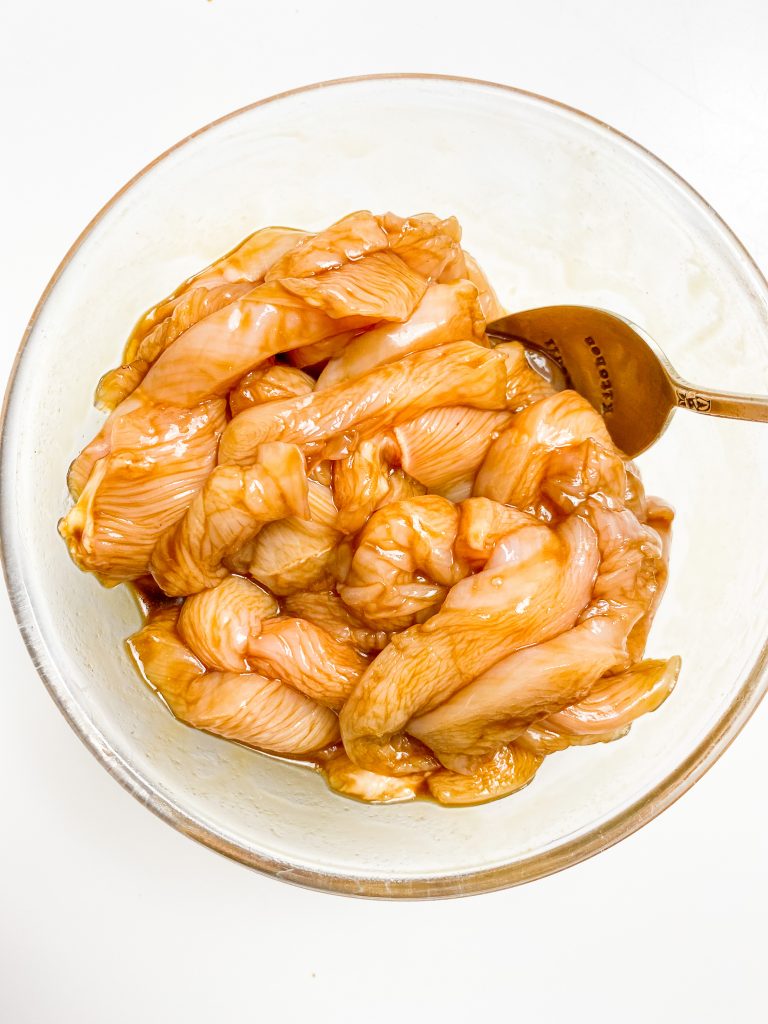
2 Mix 2 tablespoons sauce with chicken 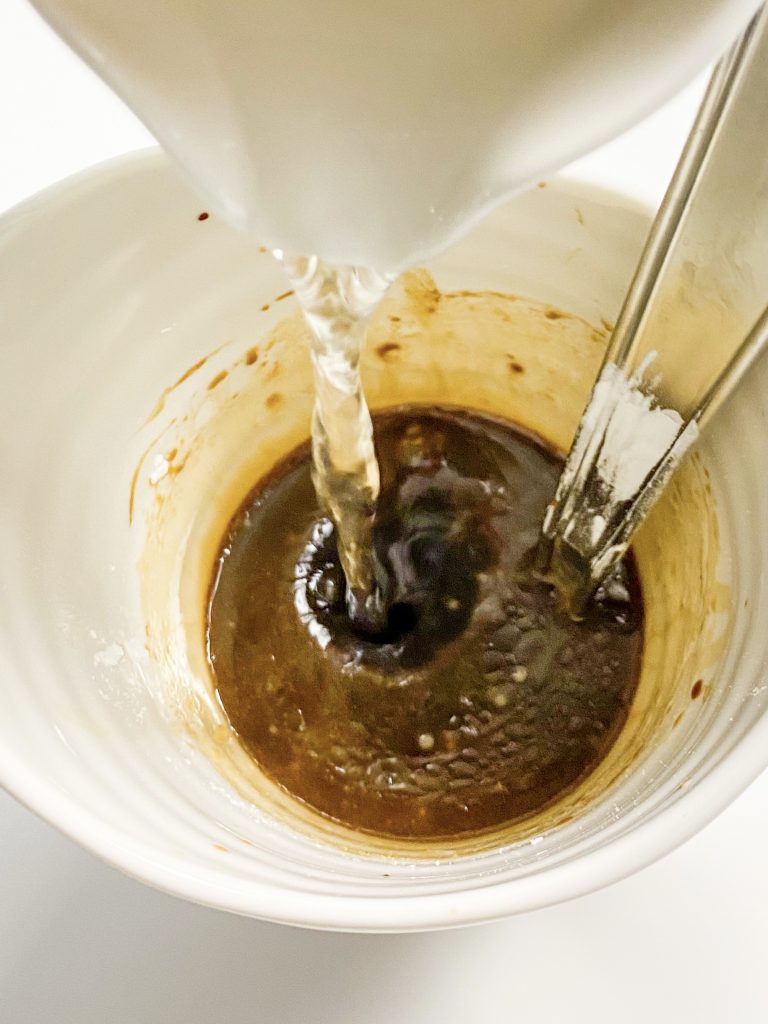
3 Add water to remaining sauce 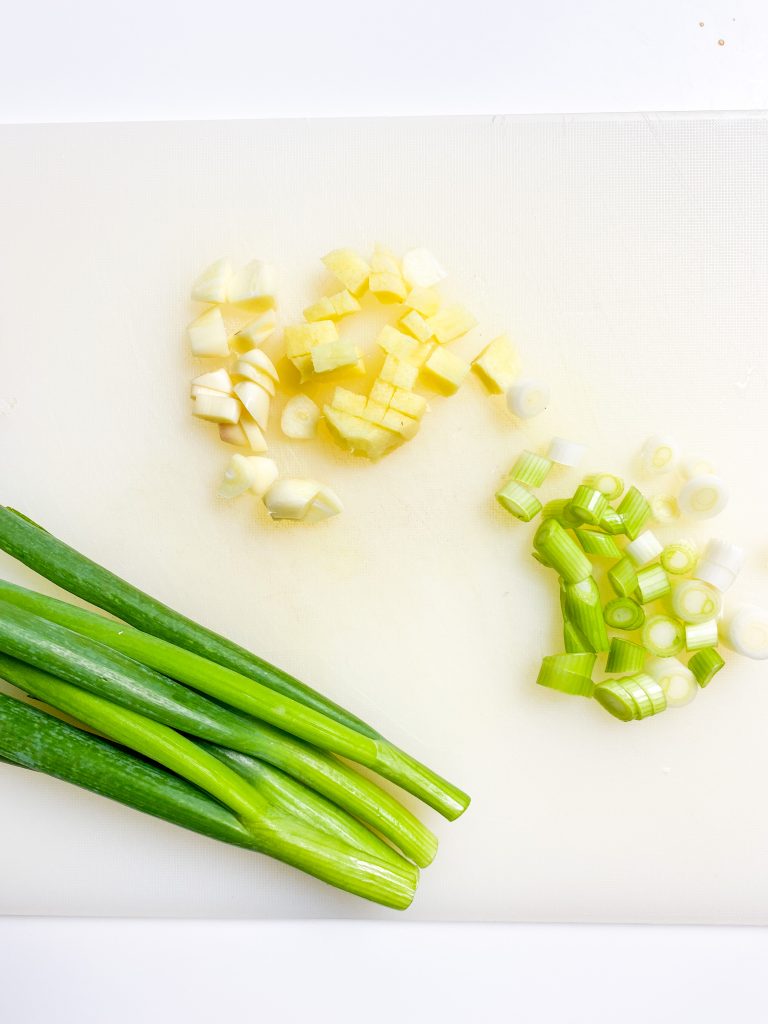
4 Prepare onion, garlic and ginger 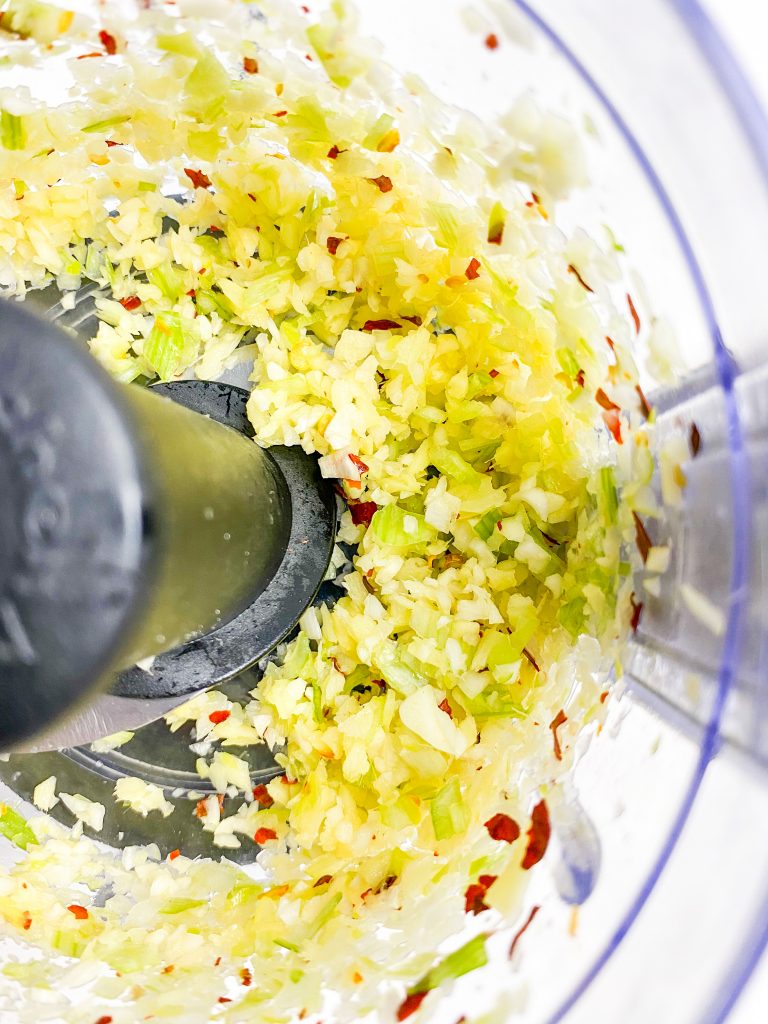
5 Blitz onion, garlic, ginger and chilli 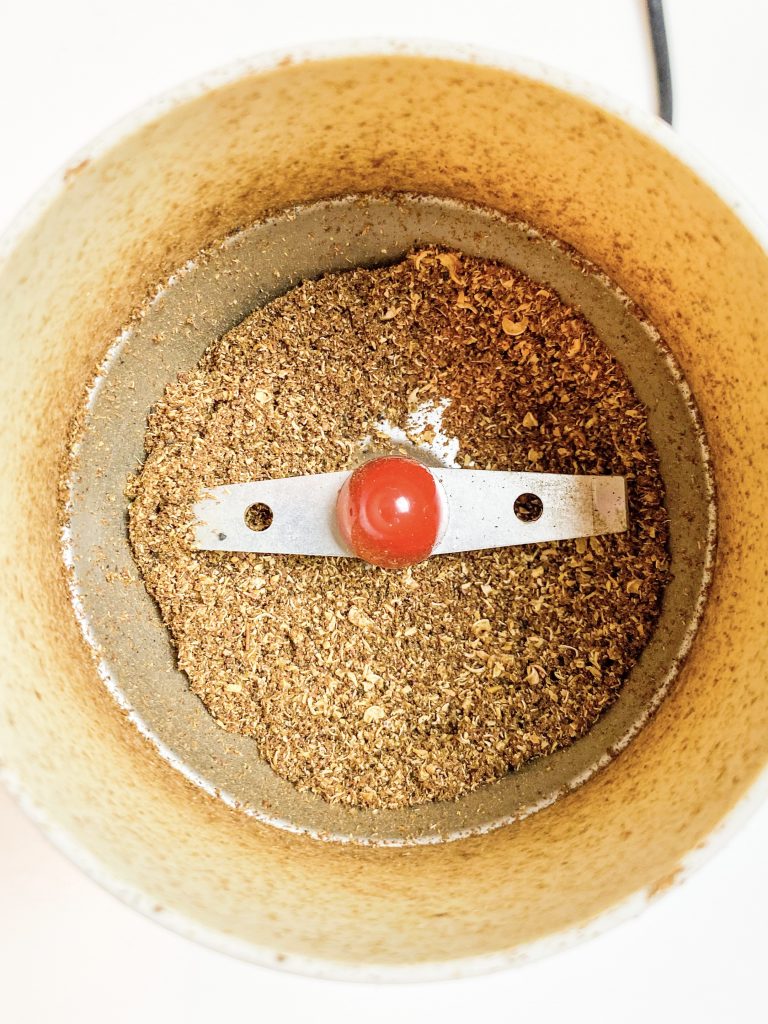
6, 7 Roast Sichuan 2 mins and grind to powder 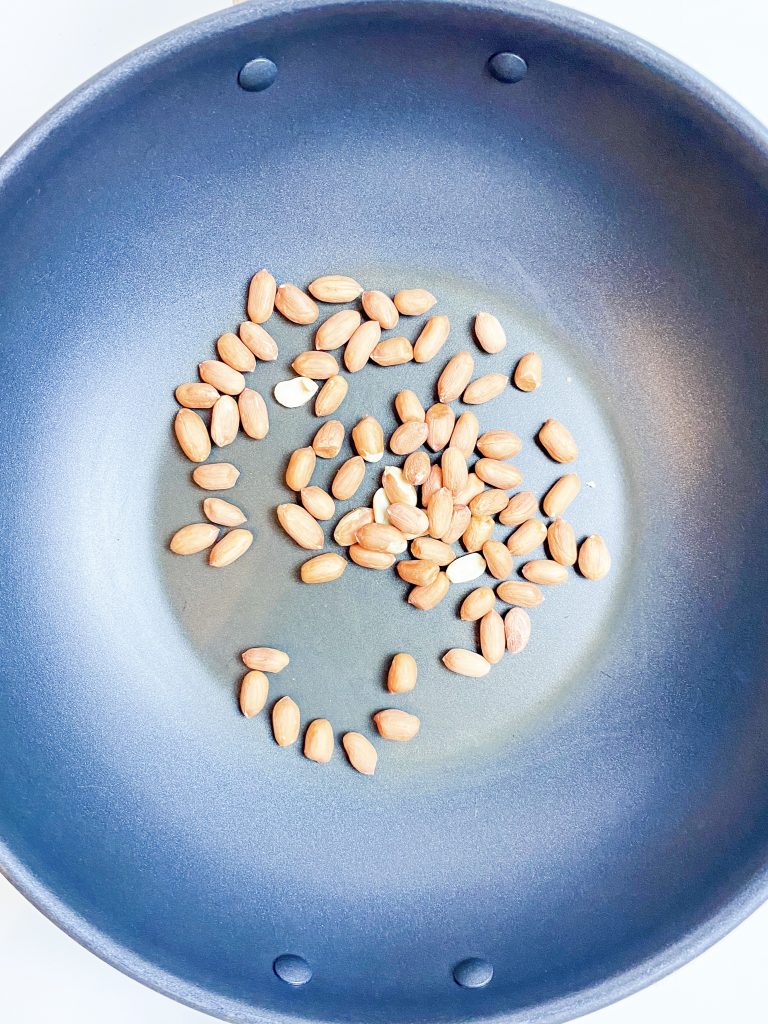
8 Roast peanuts 3-4 mins 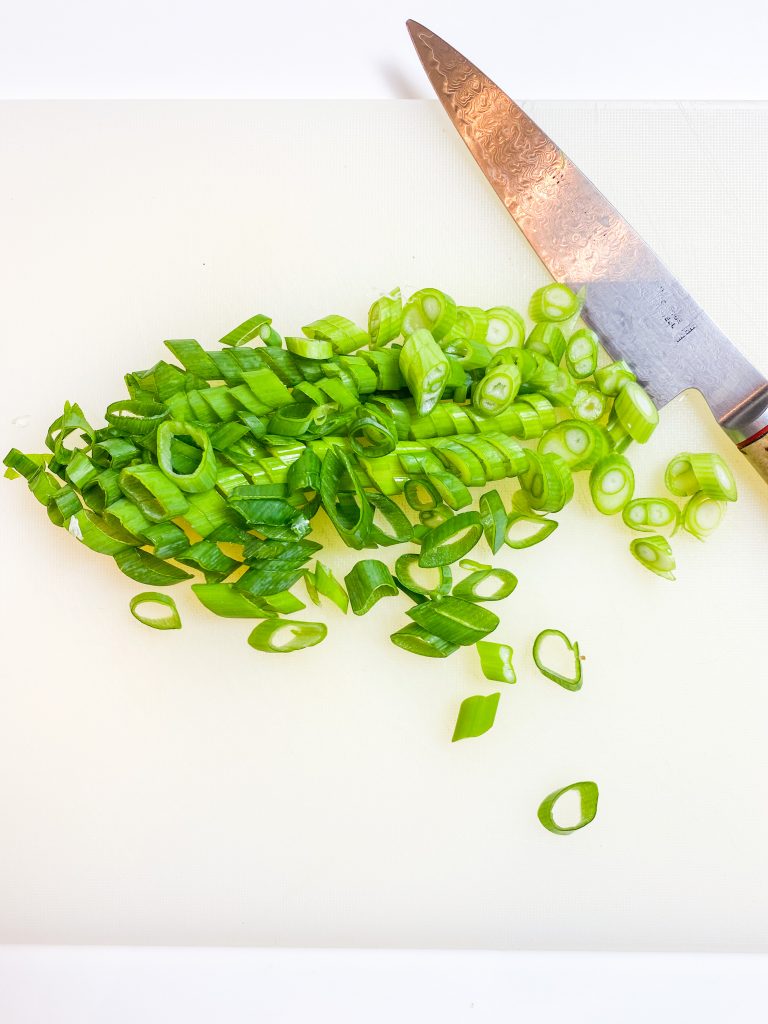
9 Finally slice green parts of onions.
Now make the stir fry:
- Heat the vegetable oil in the wok over a moderately high temperature and add the finely chopped garlic, ginger, onion and the chilli flakes. Cook for around 1 minute until fragrant.
- Tip in the chicken and cook until almost cooked through.
- Add the Sichuan peppercorns, pour in the sauce and continue to cook until the the sauce is thick, coats the chicken and has thickened.
- Just before serving, stir in the peanuts and ¾ of the chopped green spring onion leaves.
- Serve straight away sprinkled with the remaining green onion slices and some cooked rice.
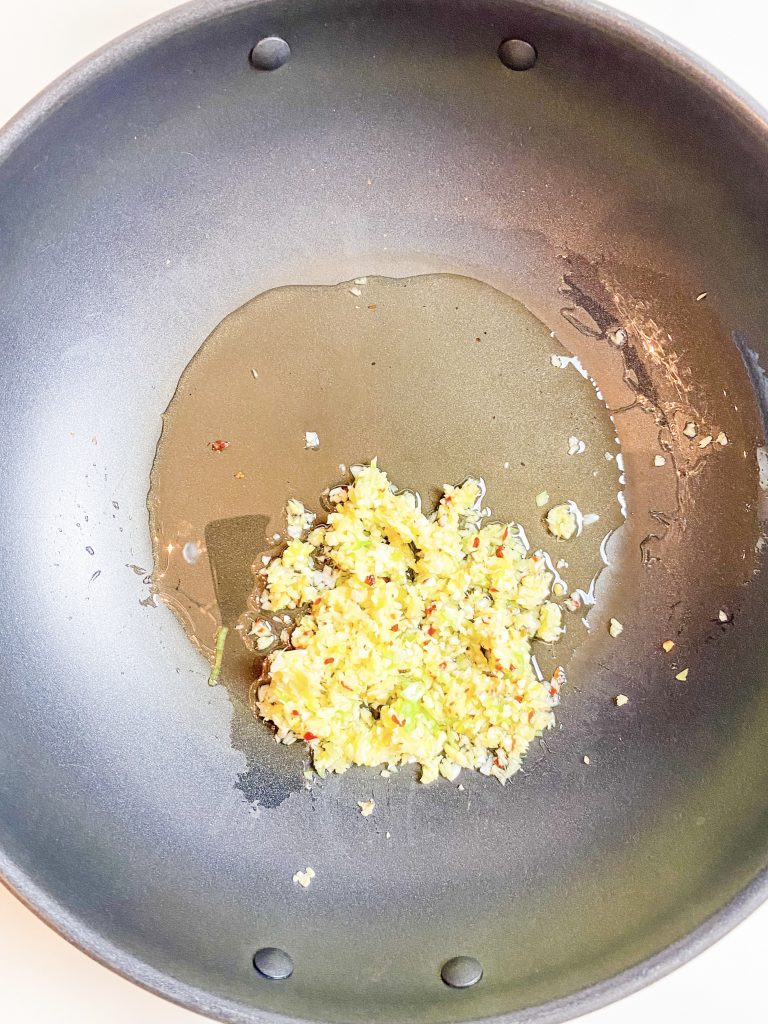
1 Cook onion, garlic, ginger and chilli 1 min 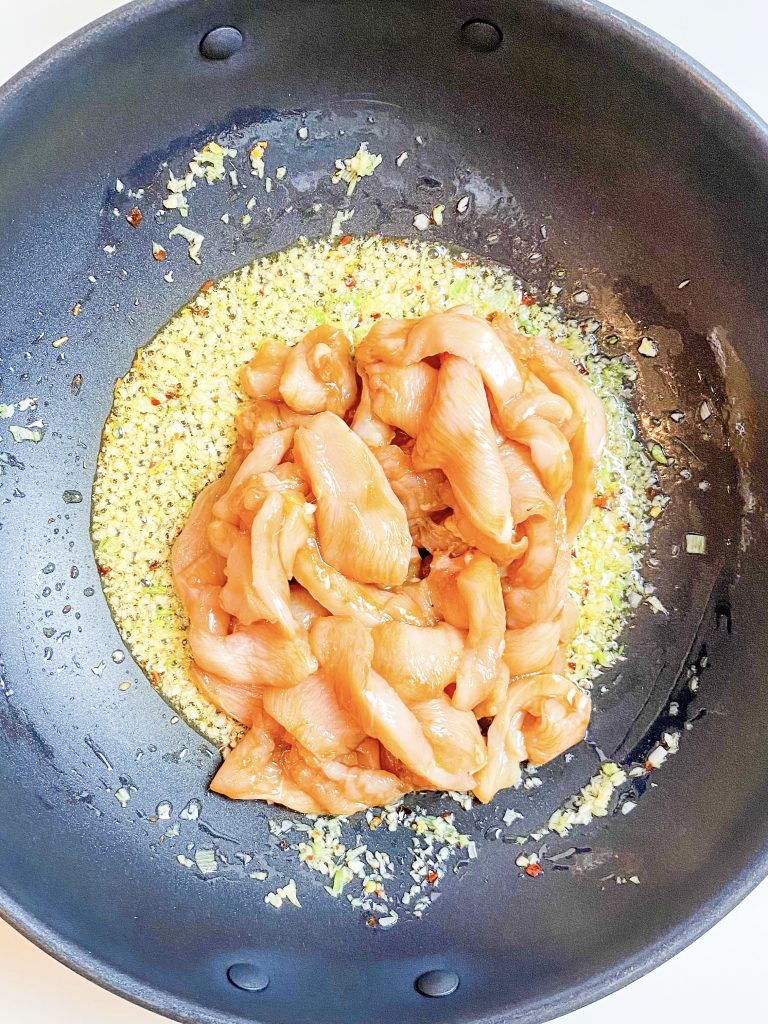
2 Add chicken 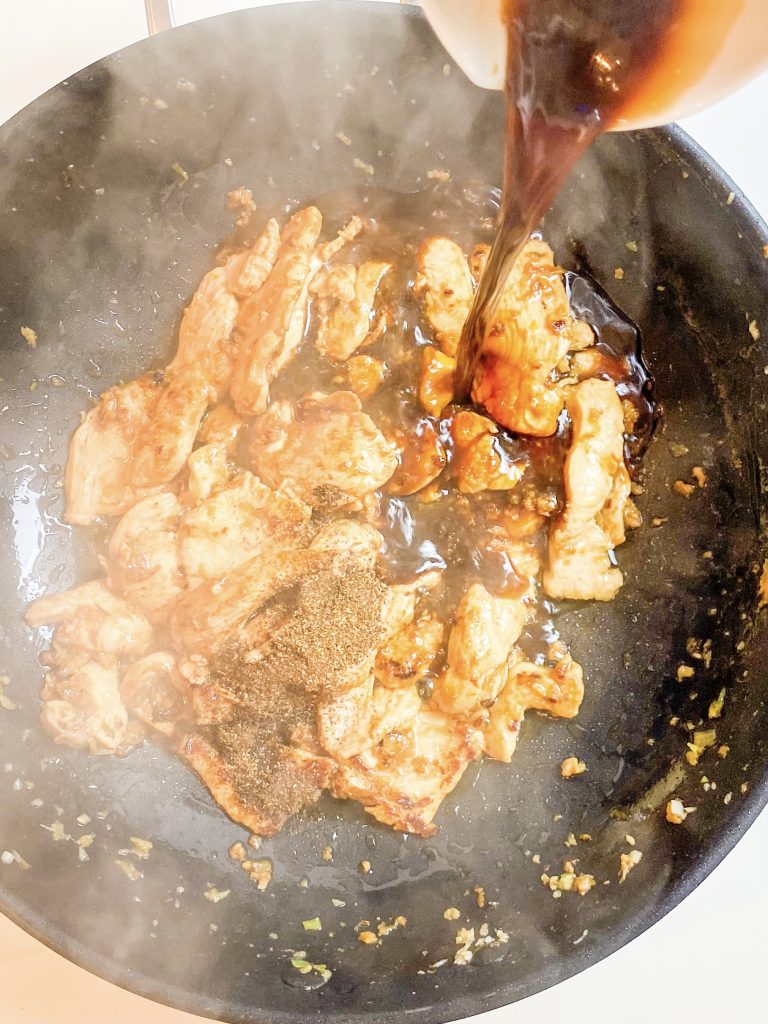
3 Add sauce, heat, then peanuts and green onion 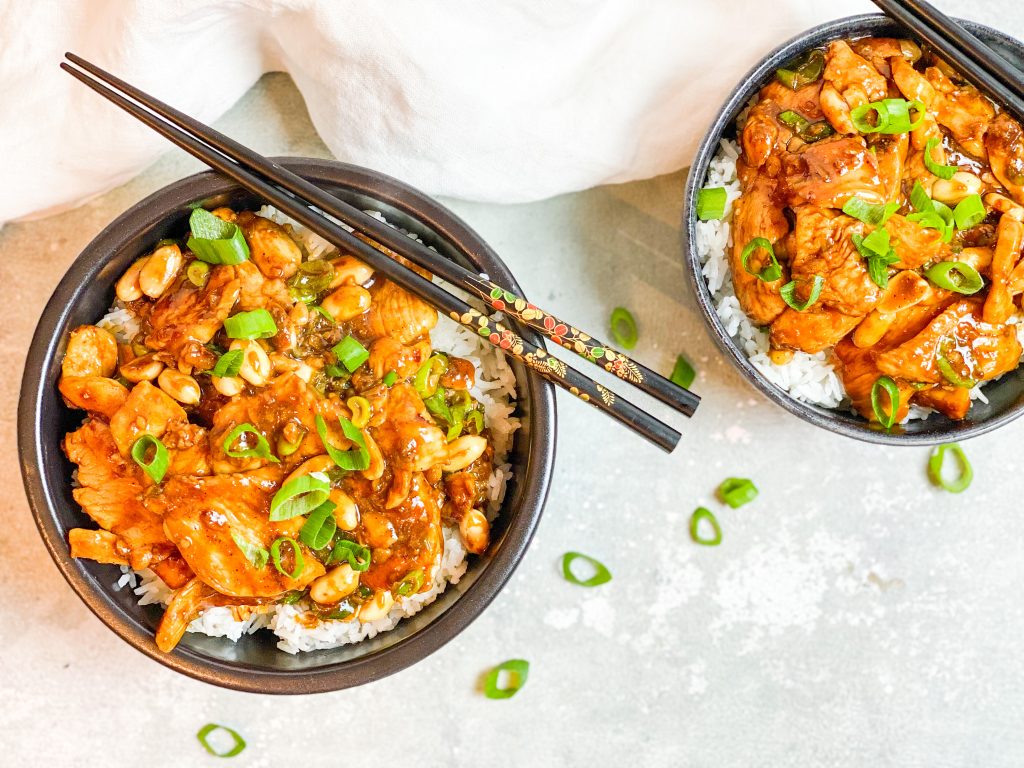
Serve with rice, sprinkled with extra spring onion
Can you replace the chicken with fish or vegetables?
I’m very pleased to say this recipe is also delicious with pan-fried salmon or some roast cauliflower, if you are looking for a vegan version. Whilst Kung Pao Chicken is a family favourite, it was Emma who particularly loved it. As she no longer eats meat, she is very happy she can still enjoy this luscious sauce.
Some ingredients are hard to find. Can you suggest any replacements?
- light soy sauce – can be replaced with all-purpose soy sauce. Do not replace with dark soy sauce, the flavour will be too strong.
- dark soy sauce – can be replaced with all-purpose or light soy sauce
- Shaoxing Cooking wine – can be replaced with a dry sherry, Japanese cooking sake or Japanese mirin. Mirin is very sweet, so if you are using it, reduce the sugar to 1 tablespoon.
- Chinese black vinegar – this can be replaced with rice wine vinegar (use 2 tablespoons), a mild balsamic vinegar (use 1½ tablespoons) or white wine vinegar (use 1½ tablespoons). Do not use Taiwanese black vinegar, the flavour profile is very different.
- toasted sesame oil – simply omit this if you cannot find it.
- Sichuan peppercorns – these are very difficult to replace and nothing else also provides the numbing and tingling effect from Sichuan. However, the best alternative would be to use half black peppercorns and half coriander seeds. You could also add the grated zest of ¼ lemon to bring the citrusy note that Sichuan is famous for.
- peanuts – if you are allergic to peanuts you can simply omit them. Cashew nuts are also delicious though, if you can eat those. Prepare ion the same way.
Made this recipe?
If you make this recipe, do please tag me on instagram @daffodil_kitchen. You could also leave a comment in the box directly below the recipe.
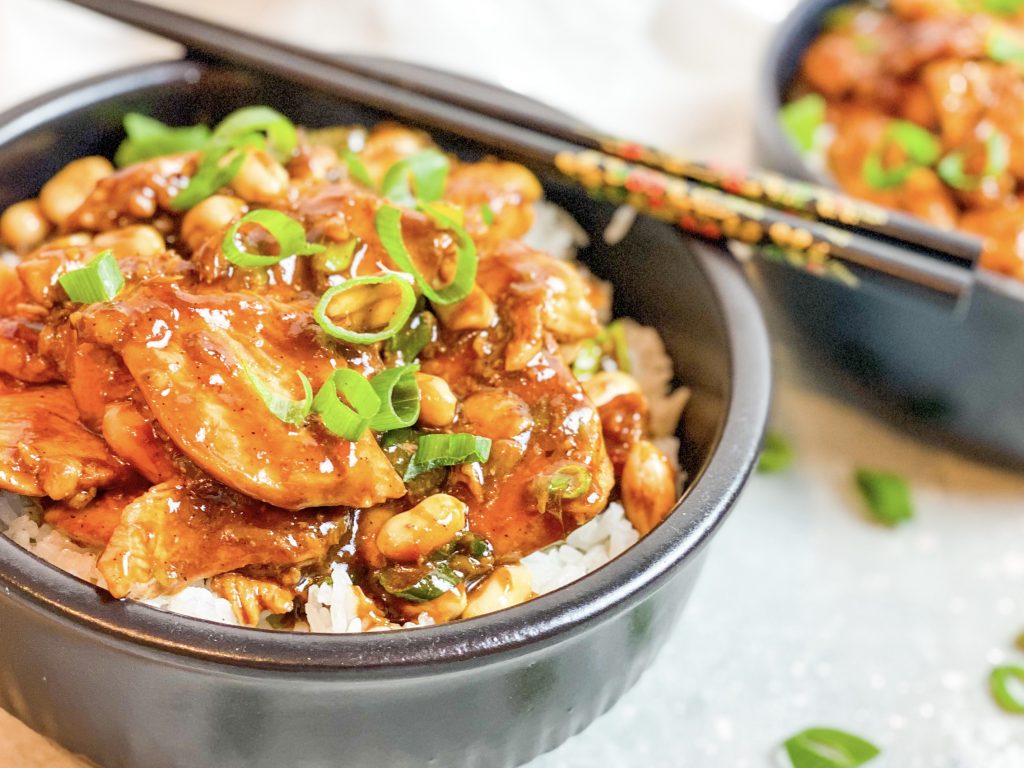
Kung Pao Chicken
Kung Pao Chicken is a sweet and salty stir fry with a spicy Sichuan peppercorn and chilli kick. Melt in the mouth slices of chicken are cooked with chilli, garlic, ginger and peanuts, bound in a velvety, soy and Shaoxing wine Chinese sauce in an explosion of texture and flavou
Ingredients
Kung Pao sauce: (See Recipe Notes for suggested alternative ingredients, if necessary)
- 2 teaspoons cornflour
- 2½ tablespoons light soy sauce
- 1½ tablespoons dark soy sauce
- 1½ tablespoons Shaoxing Cooking wine (or you can use sherry)
- 1½ tablespoons Chinese black vinegar
- 1 teaspoon toasted sesame oil
- 40g/3 tablespoons caster sugar
- 90ml water
Remaining ingredients: (See Recipe Notes for suggested alternative ingredients, if necessary)
- 1 – 1½ tablespoons Sichuan peppercorns or 1 – 1½ teaspoons Sichuan powder
- 80g roast, unsalted peanuts (or use roast cashew nuts)
- 500g skinless and boneless chicken, breast or thigh meat
- 4 medium spring onions
- 16g/4 cloves of garlic, peeled
- 16g peeled fresh ginger, roughly chopped
- ¼ – ½ teaspoon chilli flakes
- 2 tablespoons vegetable oil
Instructions
-
First make the sauce – mix the cornflour with the light soy sauce until the cornflour has dissolved and the sauce is smooth.
-
Add the remaining ingredients, apart from the water.
-
Prepare the chicken and vegetables – thinly slice the chicken and put it in a bowl.
-
Add 2 tablespoons of Kung Pao sauce to the chicken and mix thoroughly. Set aside to marinate whilst you prepare the rest of the ingredients.
-
Now add the water to the remaining sauce and set aside.
-
Peel and roughly chop the garlic and ginger. Trim the spring onions and separate the the white bulbs from the green tops. Roughly chop the white bulbs and set the green leaves aside.
-
Put the garlic, ginger, chopped white onion and the chilli flakes in a small food processor and blitz until they are finely chopped.
-
Heat the wok over a moderately hot temperature and cook the Sichuan peppercorns for a couple of minutes, until aromatic. Shake the pan or stir a couple of times to ensure even heating.
-
Tip into a mini spice blender and blitz until they are in a fine powder.
-
Now add the peanuts (or cashews) to the pan and cook for 3-4 minutes until lightly browned.
-
Finally slice the green parts of the onions.
-
Now make the stir fry: heat the vegetable oil in the wok over a moderately high temperature and add the finely chopped garlic, ginger, onion and the chilli flakes. Cook for around 1 minute until fragrant.
-
Tip in the chicken and cook until almost cooked through.
-
Add the Sichuan peppercorns, pour in the sauce and continue to cook until the the sauce is thick, coats the chicken and has thickened.
-
Just before serving, stir in the peanuts and ¾ of the chopped green spring onion leaves.
-
Delicious served with rice.
Recipe Notes
Equipment:
- kitchen scales and measuring spoons
- chopping board and knife
- mixing jug or bowl for the sauce
- mixing bowl to marinade the chicken
- wok or large frying pan
If you are using peanuts with their skins on –
If your peanuts have skins, tip into a tea towel, wrap the tea towel around the nuts and rub enthusiastically so the skins come off. Set aside in a bowl.
Can you replace the chicken with fish or vegetables?
I’m very pleased to say this recipe is also delicious with pan-fried salmon or some roast cauliflower, if you are looking for a vegan version. Whilst Kung Pao Chicken is a family favourite, it was Emma who particularly loved it. As she no longer eats meat, she is very happy she can still enjoy this luscious sauce.
Some ingredients are hard to find. Can you suggest any replacements?
- light soy sauce – can be replaced with all-purpose soy sauce. Do not replace with dark soy sauce, the flavour will be too strong.
- dark soy sauce – can be replaced with all-purpose or light soy sauce
- Shaoxing Cooking wine – can be replaced with a dry sherry, Japanese cooking sake or Japanese mirin. Mirin is very sweet, so if you are using it, reduce the sugar to 1 tablespoon.
- Chinese black vinegar – this can be replaced with rice wine vinegar (use 2 tablespoons), a mild balsamic vinegar (use 1½ tablespoons) or white wine vinegar (use 1½ tablespoons). Do not use Taiwanese black vinegar, the flavour profile is very different.
- toasted sesame oil – simply omit this if you cannot find it.
- Sichuan peppercorns – these are very difficult to replace and nothing else also provides the numbing and tingling effect from Sichuan. However, the best alternative would be to use half black peppercorns and half coriander seeds. You could also add the grated zest of ¼ lemon to bring the citrusy note that Sichuan is famous for.
- peanuts – if you are allergic to peanuts you can simply omit them. Cashew nuts are also delicious though, if you can eat those. Prepare ion the same way.

Espresso Martini Trifle
You May Also Like

Double Chocolate Chip Muffins with Chocolate Streusel and Chocolate Mini Eggs
4th April 2023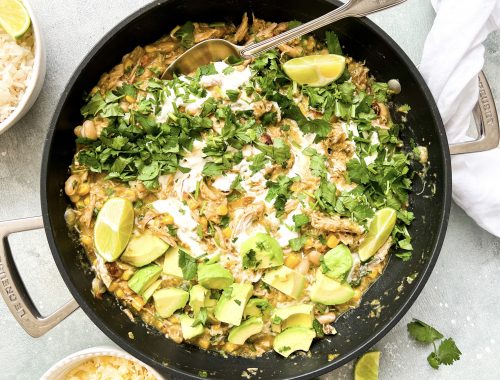
Creamy White Chicken Chilli
25th September 2022